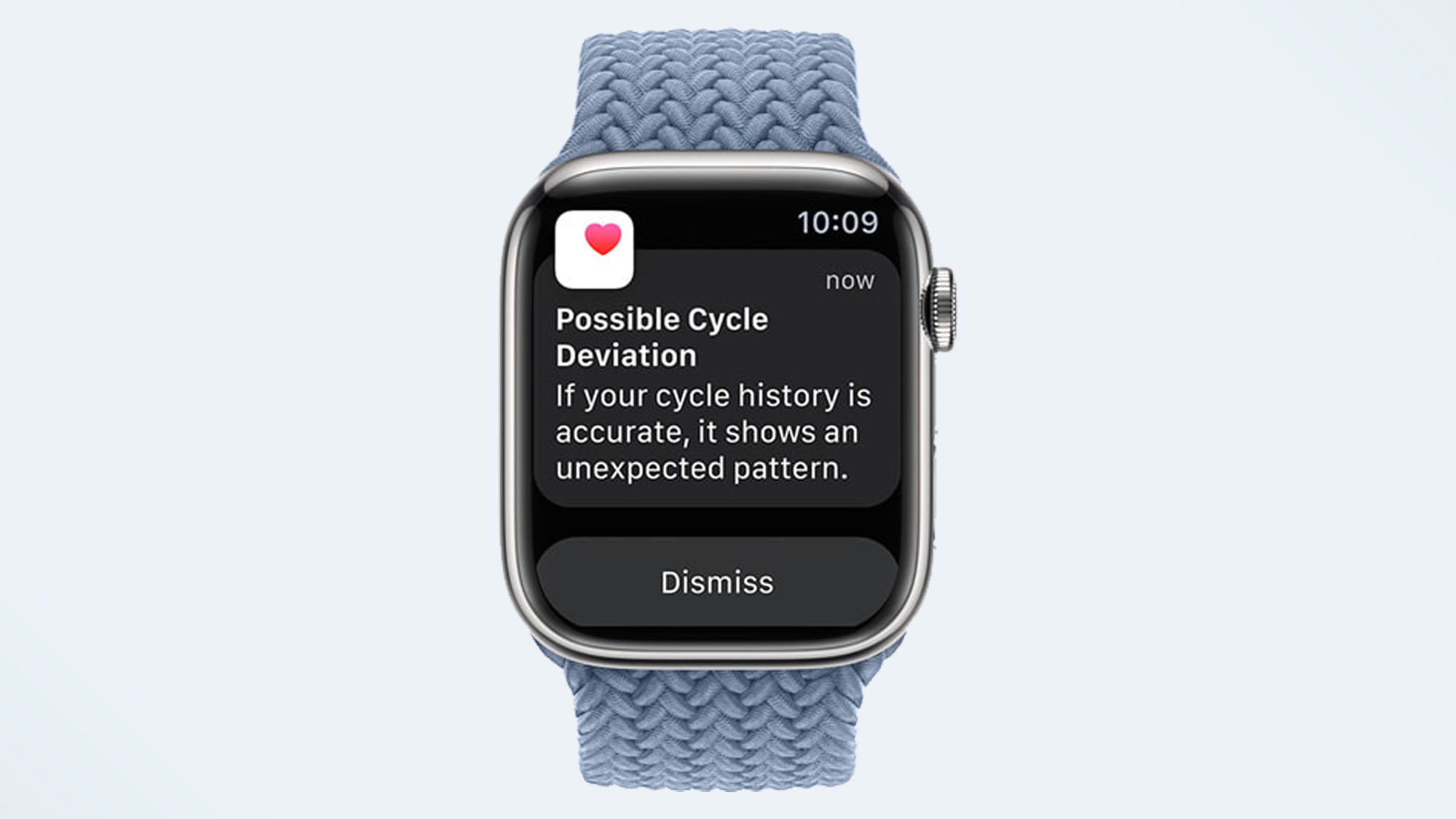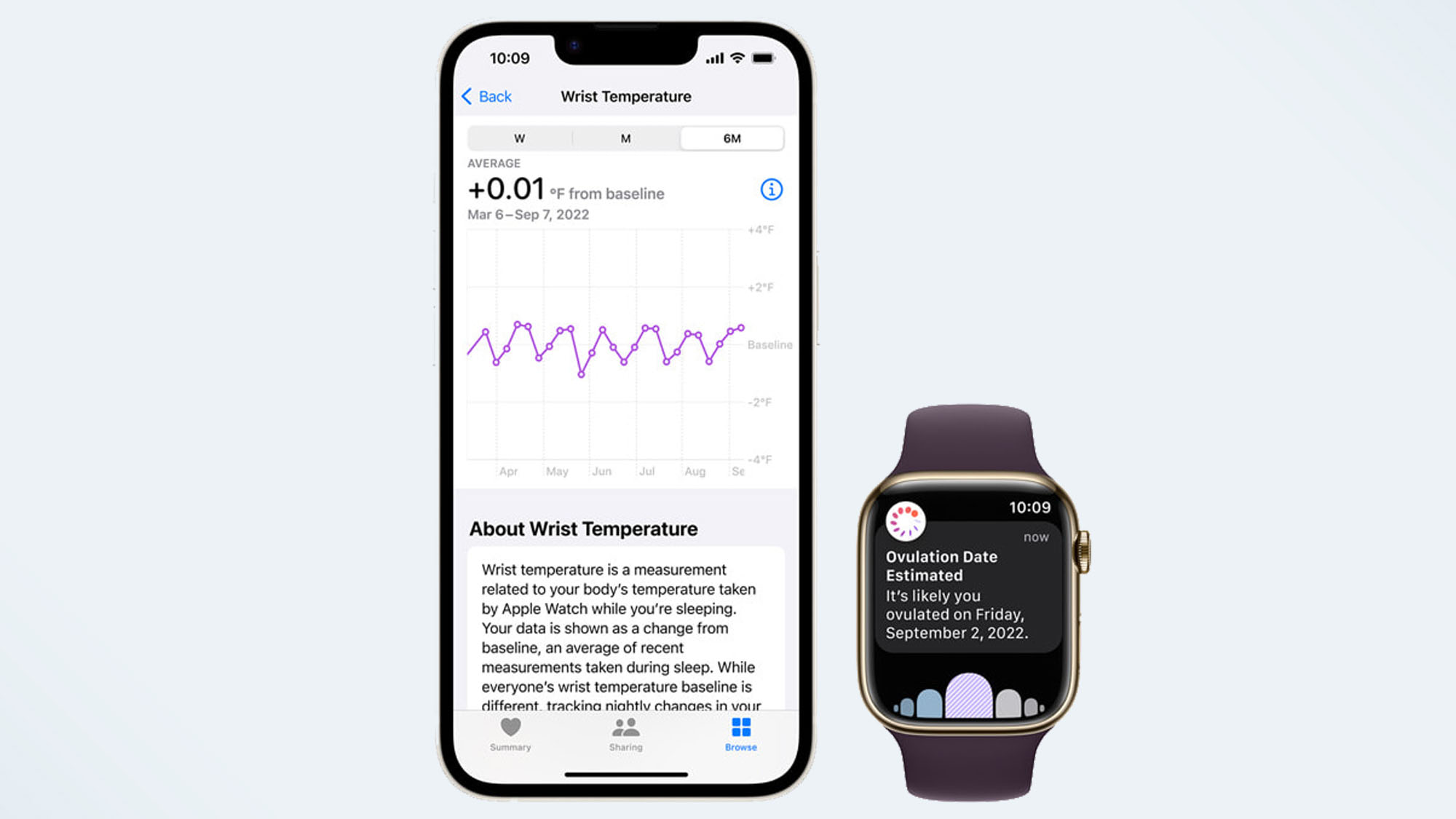Apple Watch 8 skin temperature sensor — here's what it can do

As a runner, I’m keen to get my hands on the Apple Watch Ultra, with its huge screen, extended battery life and advanced sports features. Yet I wasn’t expecting to also be as excited as I am by the Apple Watch 8’s new temperature sensor — and for one main reason.
A temperature sensor is nothing new on a smartwatch — most of the best Garmin watches and the more premium best Fitbits have been able to measure the skin’s temperature for years, but Apple has taken its time adding this technology to its smartwatches, and it looks to be worth the wait. At the Apple event, the addition of the skin temperature sensor was focused on menstrual tracking, but it can also give users more accurate sleep data.
Using two built-in sensors, the Apple Watch Series 8 will read the temperature of the skin every five seconds overnight. Apple says this allows the built-in menstrual cycle tracking app to give users a better idea of when they are ovulating, as the body’s temperature rises in response to ovulation. This can be helpful for some women, whether they’re trying to conceive or avoid getting pregnant.
Plus, with iOS 16 and watchOS 9, Cycle Tracking users can receive notifications if their logged cycle history shows irregular or prolonged periods, as well as persistent spotting, as these can be signs of health conditions such as fibroids or polycystic ovary syndrome (PCOS) .
As someone who has gone through most of the popular period tracking apps on the market, the idea that my watch will take my temperature for me reduces the human error that comes with daily temperature readings — after a brief stint using Natural Cycles, I realized that remembering to take my temperature before getting out of bed just wasn’t going to happen.
It’s also beneficial, as a runner, to be able to check my cycle from my wrist, as it can affect my ability to perform on certain days of the month (here’s how your period can affect your exercise performance, according to a doctor). Plus, coming from Apple, I know it’ll be packaged up in a simple, easy-to-read style, that’ll make it clear to see at a glance what’s happening.

That said, as with all methods of family planning, women should tread carefully. Relying on temperature readings alone isn’t always accurate, especially for women who don’t have regular cycles. Dr. Michael Belmonte, an obstetrician-gynecologist in Colorado and a Fellow with Physicians for Reproductive Health, told Tom’s Guide, “basal body temperature monitoring by itself is not a good way of tracking fertile days or preventing pregnancy. This is because your most fertile days will occur 2-3 days before you see an increase in body temperature, which occurs at the time of ovulation. It can also be thrown off by other things that can mimic a rise in body temperature, like various medical conditions or acute illness, like a cold, flu, or even COVID”, Belmonte warns.
Get instant access to breaking news, the hottest reviews, great deals and helpful tips.
To be fair, Apple put emphasis on the temperature data, heart rate readings and the user’s logged period’s to improve the accuracy of the readings.
Apple has also marketed the basal temperature reading as a way to predict when you’re most likely to get pregnant. At the time of writing, this feature cannot be sold as a way to prevent pregnancy, because it isn’t approved by the Food and Drug Administration as birth control. That said, with apps like Natural Cycles cleared by the FDA in 2018 as a form of birth control, this could change in the future.
What has Apple said regarding privacy?
In light of Roe v Wade, Apple has, understandably, highlighted the advanced methods of encryption surrounding its Cycle Tracking features. Earlier this year, a number of popular period apps were forced to respond to the Roe v Wade ruling, with many users fearing the apps could be used against them.
Speaking a the Far Our event, Sumbul Desai, vice president of health at Apple, said, “we believe privacy is a fundamental human right and that your health data is yours and yours alone. Your cycle tracking data is encrypted on your device, and only accessible with your passcode, Touch ID or Face ID. When using iOS and WatchOS with the default two-factor authentication and a passcode, healthcare data synced to iCloud is encrypted end to end, meaning that Apple does not have the means to decrypt the data, and therefore cannot read it.”
If you are concerned, here's what a cybersecurity expert said about protecting your data on period tracking apps, and how to track your period without using an app.

Jane McGuire is Tom's Guide's Fitness editor, which means she looks after everything fitness related - from running gear to yoga mats. An avid runner, Jane has tested and reviewed fitness products for the past five years, so knows what to look for when finding a good running watch or a pair of shorts with pockets big enough for your smartphone. When she's not pounding the pavements, you'll find Jane striding round the Surrey Hills, taking far too many photos of her puppy.
